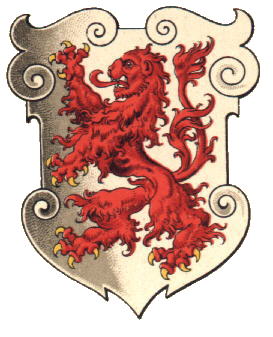Estate of Cattaro: Difference between revisions
Jump to navigation
Jump to search
Knorrepoes (talk | contribs) m (Text replace - "'''Origin/meaning :'''<br>" to "====Origin/meaning====") |
Knorrepoes (talk | contribs) m (Text replace - "[[Literature" to "{{media}} [[Literature") |
||
| Line 11: | Line 11: | ||
====Origin/meaning==== | ====Origin/meaning==== | ||
The Estate of Cattaro (now Kotor, [[Montenegro]]) was acquired by Austria-Hungary in 1797 and officially became part of Austria-Hungary in 1814. Prior to 1797 the city belonged to Serbia, Turkey, Hungary and Venice.The arms were created by the Doges of Venice and symbolise the Kingdom of Albania, as they imagined that Cattaro historically belonged to Albania. The present city of [[Kotor]] still uses the lion. | The Estate of Cattaro (now Kotor, [[Montenegro]]) was acquired by Austria-Hungary in 1797 and officially became part of Austria-Hungary in 1814. Prior to 1797 the city belonged to Serbia, Turkey, Hungary and Venice.The arms were created by the Doges of Venice and symbolise the Kingdom of Albania, as they imagined that Cattaro historically belonged to Albania. The present city of [[Kotor]] still uses the lion. | ||
{{media}} | |||
[[Literature]] : Ströhl, 1890 | [[Literature]] : Ströhl, 1890 | ||
[[Category:Austro-Hungarian Empire]] | [[Category:Austro-Hungarian Empire]] | ||
Revision as of 21:23, 8 July 2014
| Heraldry of the World Civic heraldry of the Austro-Hungarian Empire |
ESTATE OF CATTARO
Origin/meaning
The Estate of Cattaro (now Kotor, Montenegro) was acquired by Austria-Hungary in 1797 and officially became part of Austria-Hungary in 1814. Prior to 1797 the city belonged to Serbia, Turkey, Hungary and Venice.The arms were created by the Doges of Venice and symbolise the Kingdom of Albania, as they imagined that Cattaro historically belonged to Albania. The present city of Kotor still uses the lion.
Contact and Support
Partners:
Your logo here ?
Contact us
© since 1995, Heraldry of the World, Ralf Hartemink 
Index of the site
Literature : Ströhl, 1890










